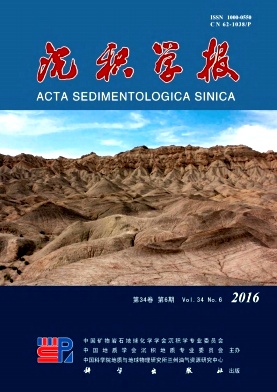Thermochemical Sulfate Reduction-related Mesogenetic Dissolution of Deeply Buried Dolostone Reservoirs in the Tazhong Area
doi: 10.14027/j.cnki.cjxb.2016.06.005
- Received Date: 2016-05-20
- Rev Recd Date: 2016-08-17
- Publish Date: 2016-12-10
-
Key words:
- mesogenetic dissolution /
- thermochemical sulfate reduction /
- Cambrian /
- Ordovician /
- Tazhong area
Abstract: Deeply buried (4 500 to 7 000 m) carbonate reservoirs in the Tazhong area, Tarim basin, NW China show obvious heterogeneity with porosity from zero in limestones to 27.8% in sour dolostones. However, origin of the porosity remains puzzled. Petrographic features, C, O isotopes were determined, and fluid inclusions were analyzed on diagenetic calcite and dolomite from Ordovician reservoirs to solve the puzzle. Ordovician carbonate reservoirs in the Tazhong area are controlled mainly by initial sedimentary environments and primary and near-surface diagenetic processes. However, vugs and pores generated from eogenetic and telogenetic meteoric dissolution were observed to have partially been destroyed due to subsequent compaction, filling and cementation. In some localities or wells (e.g. well ZG9 and TZ75), mesogenetic dissolution (e.g. thermochemical sulfate reduction, TSR) probably played an important role in pore production and reservoir quality improvement. The occurrence of TSR within Ordovician carbonate reservoirs are supported by TSR-originated calcite replacement of sulphate, and the association of sulfur species including acid gases (H2S), pyrite, anhydrite or barite and elemental sulfur with hydrocarbon and 12C-rich calcite with elevated homogenization temperatures. The TSR is observed to company with intensive dolomite dissolution, suggesting that TSR may have induced burial dissolution and thus probably increased the porosity of the sour dolostones reservoirs at least in some places. In contrast, no significant mesogenetic dissolution occurred in limestone reservoirs. The deeply buried sour dolostone reservoirs may therefore be potential exploration targets in Tarim basin.
| Citation: | JIA LianQi, CAI ChunFang, LI HongXia, WANG TianKai, ZHANG Wen, KONG LingWu. Thermochemical Sulfate Reduction-related Mesogenetic Dissolution of Deeply Buried Dolostone Reservoirs in the Tazhong Area[J]. Acta Sedimentologica Sinica, 2016, 34(6): 1057-1067. doi: 10.14027/j.cnki.cjxb.2016.06.005 |






 DownLoad:
DownLoad: